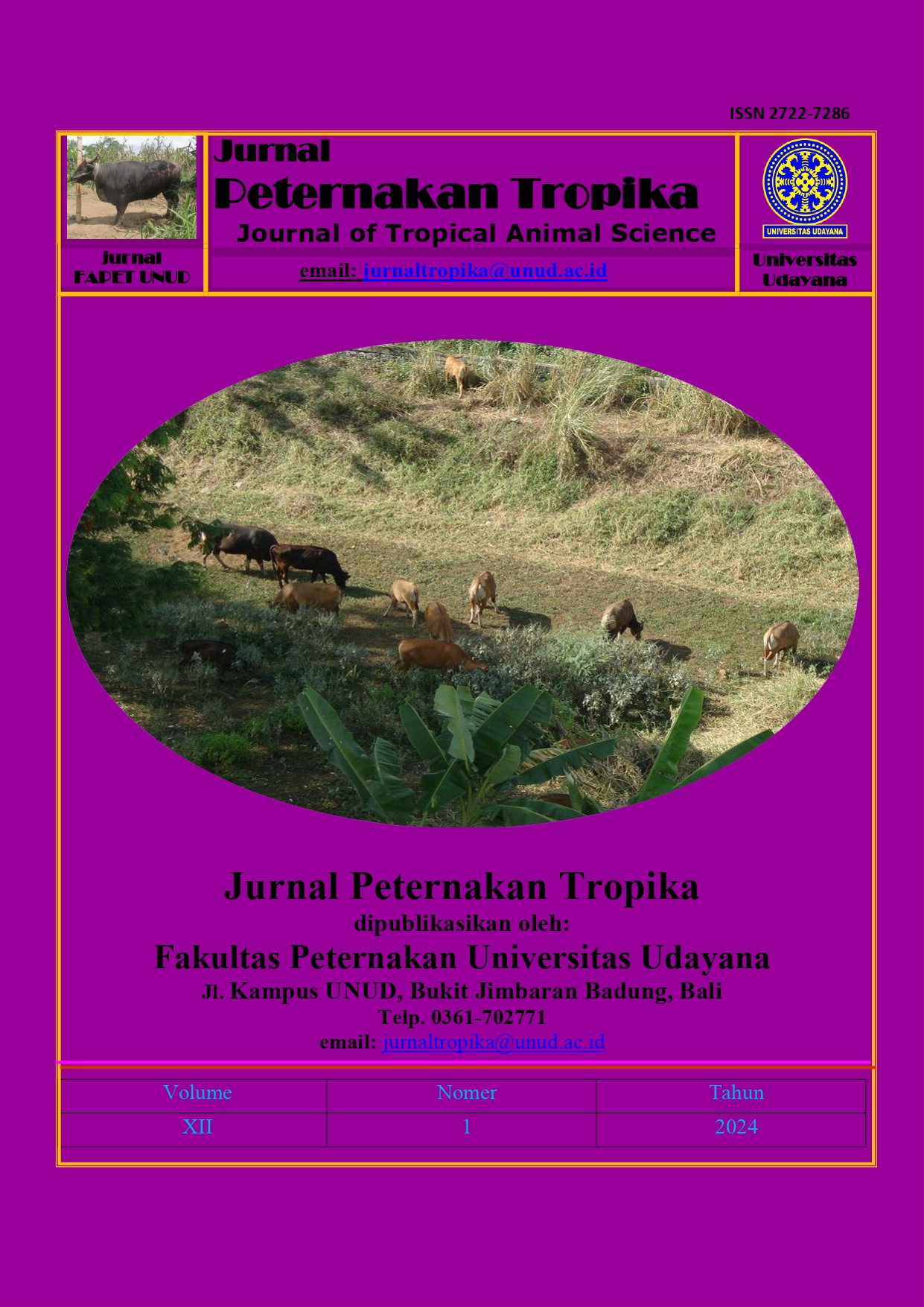THE EFFECT OF DIFFERENT SHADE LEVELS ON THE GROWTH OF Stenotaphrum secundatum GRASS ON MEDITERRANEAN SOIL
Abstract
Stenotaphrum secundatum grass is one of the forages that has long adapted to the Indonesian climate. Efforts to provide forage can be done by utilizing land under the main crop or under shade. This study aims to determine the effect of different levels of shade on the growth of Stenotaphrum secundatum grass on Mediterranean soil. This research was conducted in Sading Village, Mengwi District, Badung Regency. The study lasted for 3 months, using a completely randomized design (CRD) consisting of four treatments and each repeated seven times, so there were 28 experimental units. The treatments of shade level were: N0: 0% no shade; N1: 20% shade level; N2: 40% shade level; and N3: 60% shade level. The variables observed were the growth variables of Stenotaphrum secundatum grass including plant length, number of leaves, number of tillers, leaf area per pot, leaf color, leaf chlorophyll, and stem diameter. The results showed that the 20% shade level treatment was able to increase plant length, number of leaves, leaf area per pot, leaf color and leaf chlorophyll in Stenotaphrum secundatum grass, while the 40% and 60% shade level treatments reduced the growth of plant length, number of leaves, number of tillers, leaf area per pot, leaf color and leaf chlorophyll in Stenotaphrumsecundatum grass. It was concluded that the 20% shade level was able to increase the growth of plant length, number of leaves, leaf area per pot, leaf color and leaf chlorophyll in the best Stenotaphrum secundatum grass.






